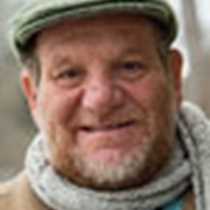What a lovely day! Our morning started very early when the National Geographic Explorer arrived around 8 am at Port Lockroy in a beautiful and quiet morning. Port Lockroy was discovered and named in 1904 by Jean Charcot from his ship Francais during the French Antarctic Expedition of 1903-05. Lockroy was named after a prominent French politician, Edouard Lockroy who helped obtain funding for the expedition.
During the Second World War, the U.K., as part of its “Operation Tabarin,” established several bases to service scientific and political objectives. Port Lockroy (Base A) was one of the first bases, together with Deception Island (Base B) and was typically occupied by 4 to 9 men until 1962. Besides visiting Bransfield House, part of the old base (now reconstructed and built into a site museum managed by the United Kingdom Antarctic Heritage Trust), we had the opportunity of walking among gentoo penguins and sheathbills that spread around the buildings. We also had the opportunity to see the first penguin chick of the season located just in front of Bransfield House.
After our visit to the base, we went for a short Zodiac shuttle and landed in Jougla Point located near the base. Jougla Point is well known for the amount of whale bones (a reminder of the whaling times) and its gentoo penguin and blue-eyed shag rookeries. We had the opportunity to walk close to the incubating penguins and blue-eyed shags, and we also enjoyed watching the first chicks of the season. The weather, although windy, was nice enough that we could enjoy the majestic views of the mountain ranges surrounding Port Lockroy and Jougla Point.
In the afternoon we initiated our way north, traveling along the Gerlache Strait and Dallmann Bay in our search for whales. The weather was perfect and we encountered several groups of humpback whales. We were surprised when the hotel staff organized a "lomito & beer" event in the sundeck! Thus, we enjoyed this special teatime event while we continued enjoying the sunny weather and the presence of the humpback whales. Later on, we continued our journey north traveling between icebergs and surrounded by majestic mountains and hanging glaciers. It was the perfect way to say goodbye to Antarctica.
We are now leaving the calm waters of the Antarctic Peninsula and it is time to reflect. Deep in our hearts we will remember the long sunsets, the endless skies, the vastness of the sea ice, the majesty of mountain peaks and hanging glaciers, the brightness of the ice, the sinuosity of channels and inlets, the tranquility of bays and coves, the delicate beauty of floating icebergs, and the rich diversity of marine fauna in Antarctica.
Antarctica is like an eternal spirit and we are certain that we will not be the same after having been on the White Continent. Antarctica makes us think about how we relate to nature in general and the responsibility that we have to protect the ecosystems that keep us alive. This is the perfect place to commit ourselves to do our outmost to preserve our planet. It is time to leave now, but Antarctica will remain in our minds and hearts for years to come…the Drake is now waiting for us…









